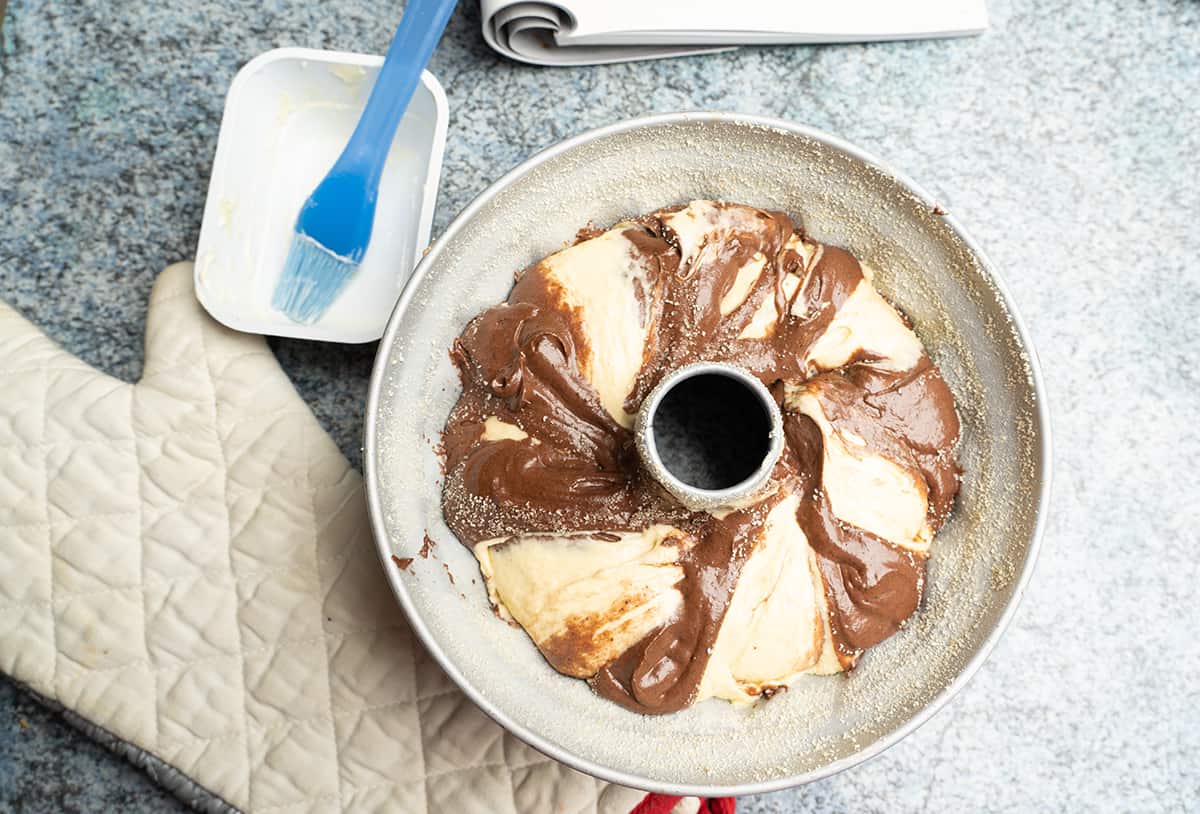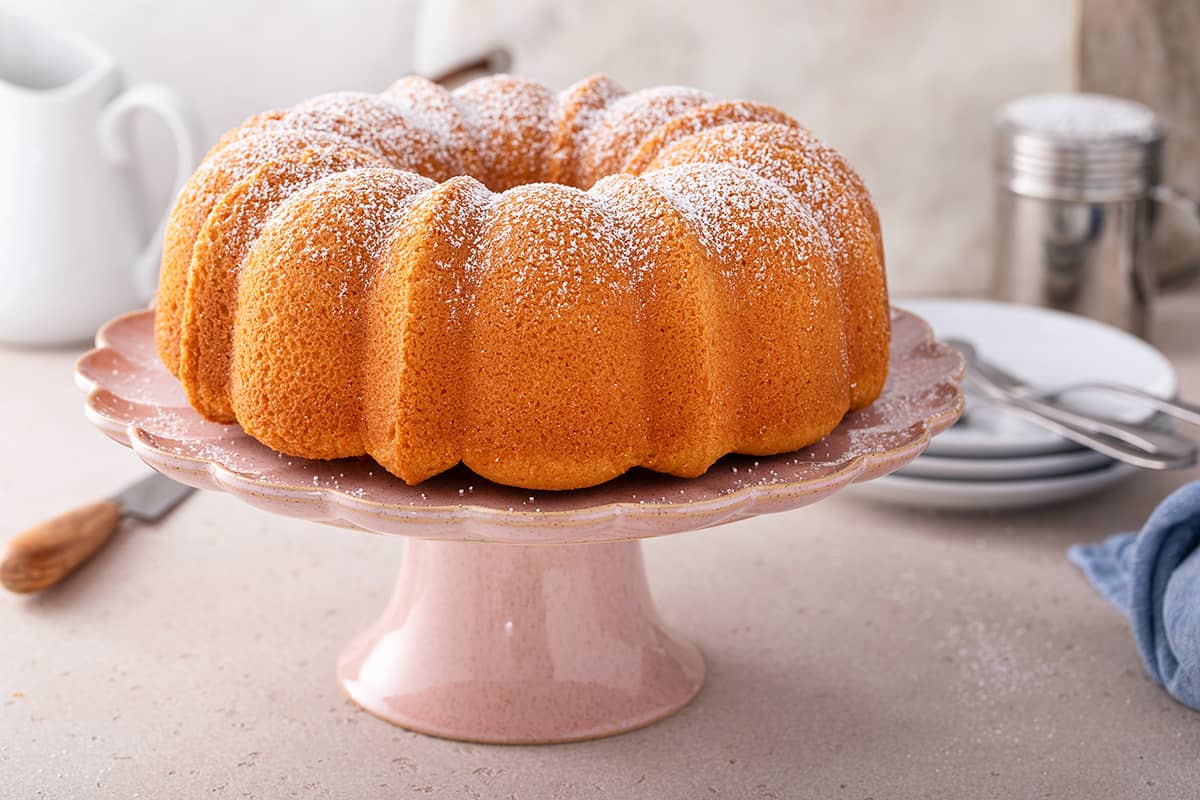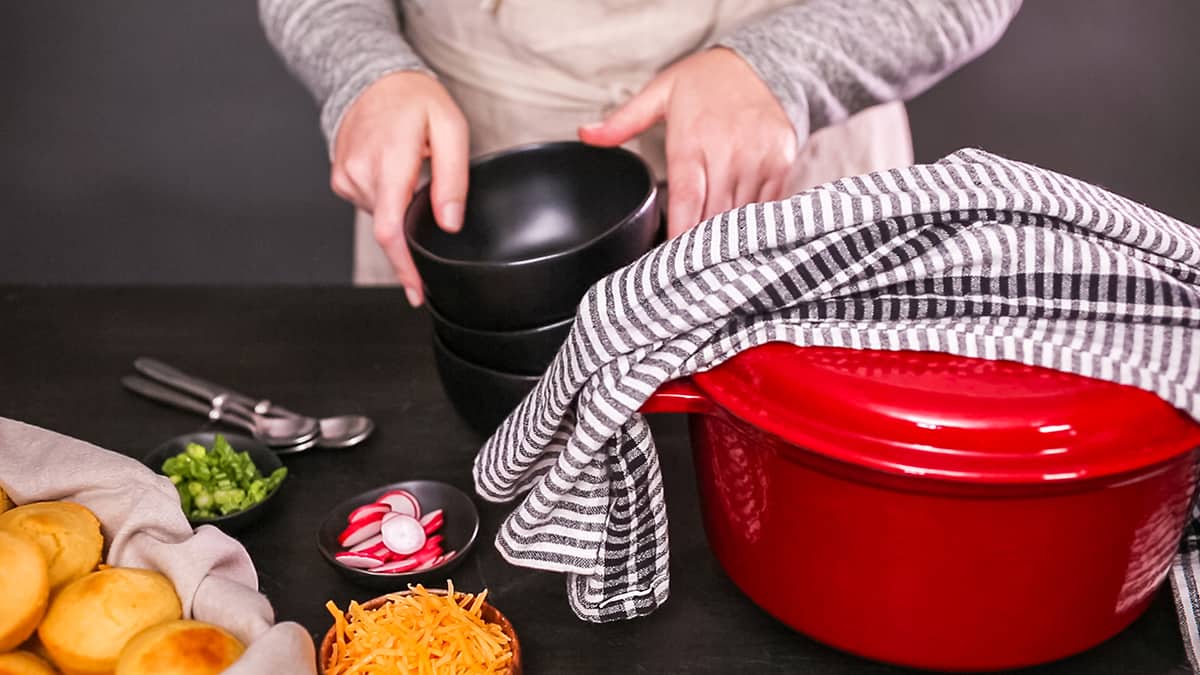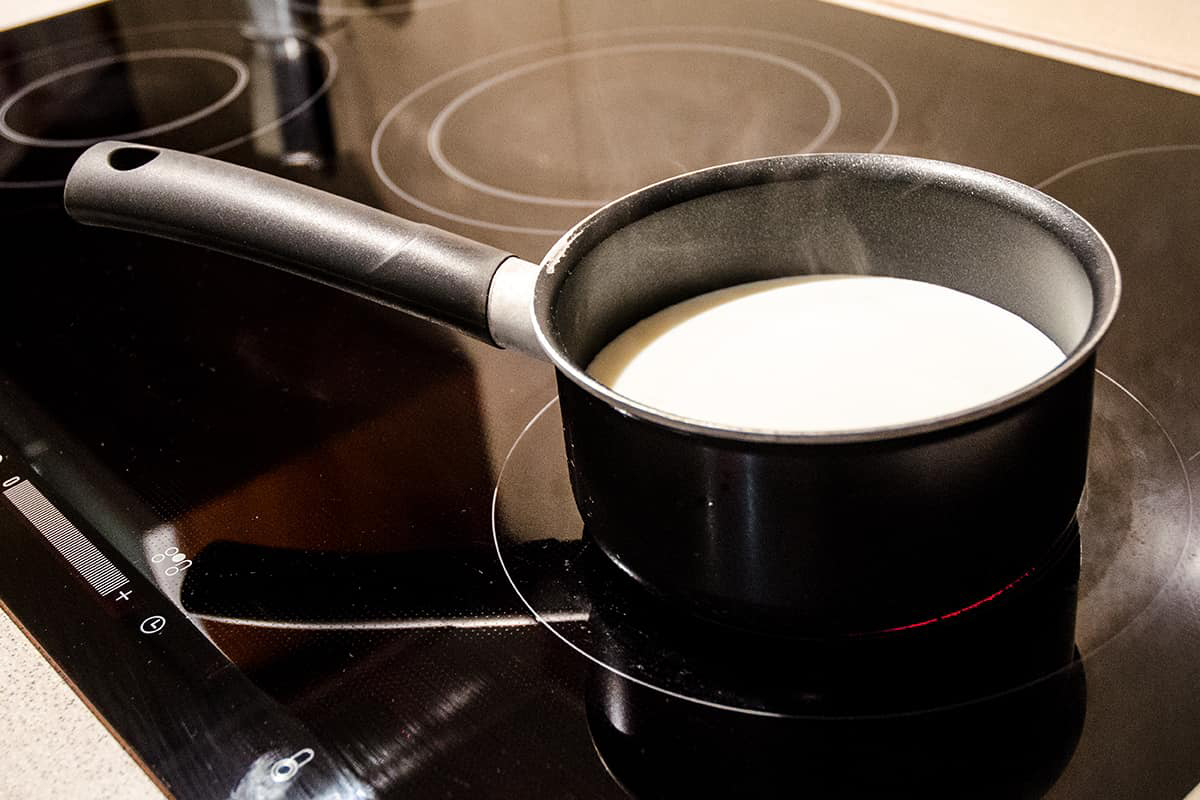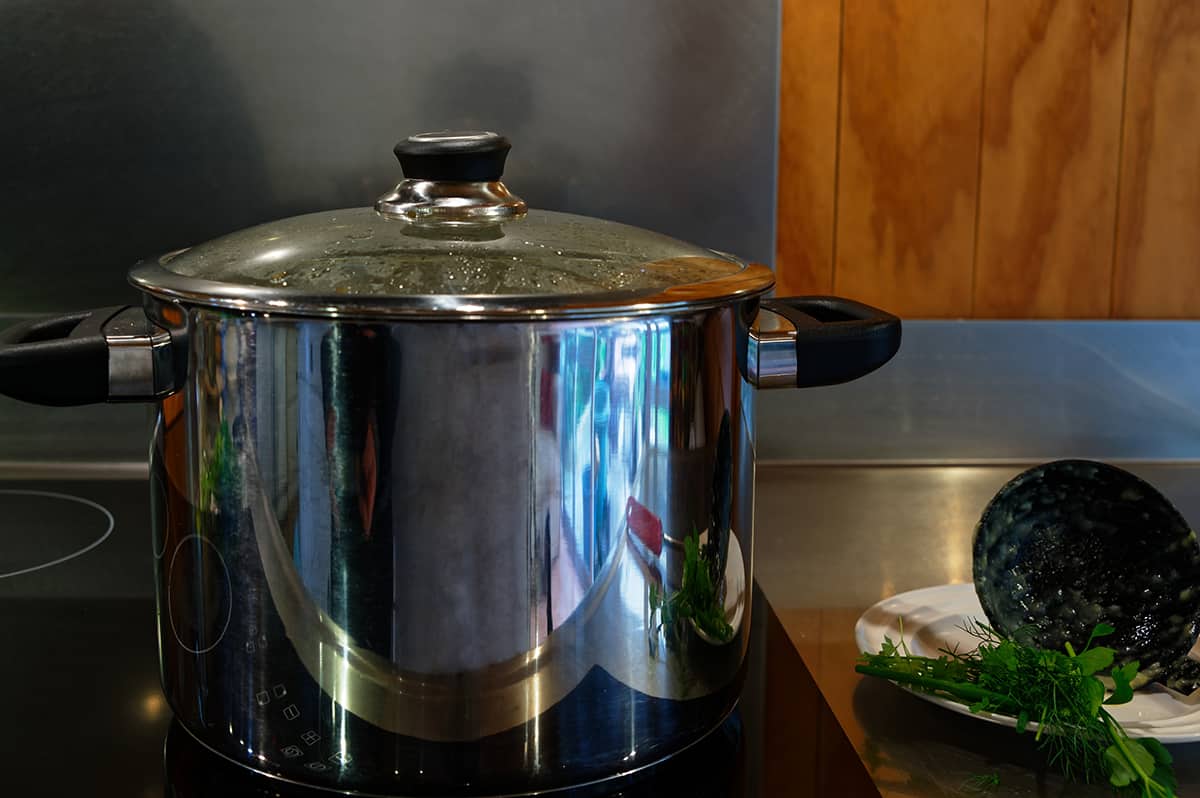Have you ever found yourself in the kitchen, trying to cook up a storm, only to realize that your trusty old saucepan just isn’t cutting it? Maybe it’s too small to fit everything you need to cook, or maybe it’s so big that you waste many ingredients. Well, it might be about time you learned about the different saucepan sizes.
Standard saucepan sizes include 1, 2, 3, and 4 quarts, with some versions measuring 5 quarts and larger. Depending on the brand, you can find 1.5, 2.5, and 3.5-quart saucepan models.
In today’s guide, we’re going to go over the various saucepan types and sizes, and I’ll also explain how you can choose the perfect saucepan for your saucing needs.
What Is a Saucepan?
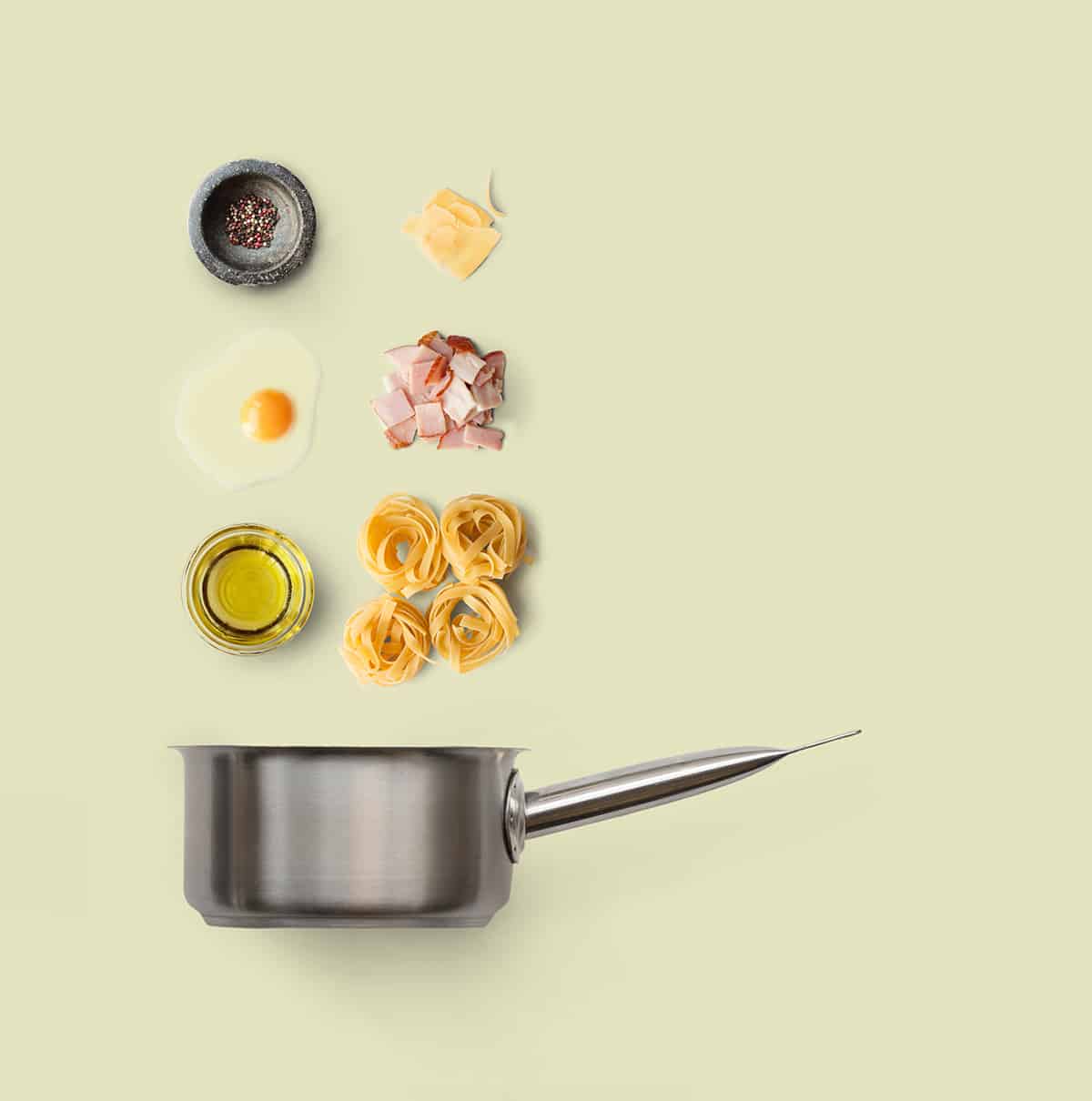
A saucepan is a cooking pot used for making sauces, soups, and other liquid-based dishes. It has high, straight sides and a long handle, and it frequently comes with a lid. They can be made of stainless steel, aluminum, or copper, each with advantages and disadvantages. Saucepans are versatile kitchen tools that can be used for a wide range of recipes and cooking techniques.
Saucepan Sizes
Saucepans come in a variety of sizes, each with its own set of advantages and applications. Understanding the various sizes of saucepans can assist you in selecting the best one for your cooking needs.
- Small saucepans, with a 1 quart or less capacity, are ideal for cooking small amounts of food, such as sauces, gravies, or melting butter. These small saucepans are also great for reheating leftovers or cooking smaller portions of oatmeal or soup.
- The 2-quart saucepan is the next size up, and it is a versatile size for everyday cooking. It’s ideal for cooking rice, vegetables, or small batches of pasta. The 2-quart saucepan can also be used to make small soups or stews, and it is large enough to handle most recipes that call for a small to medium-sized pot.
- The 3-quart saucepan is a popular size for cooking larger quantities of food like soups, stews, and sauces. It’s also great for boiling potatoes or making pasta for a large family dinner.
- The 4-quart saucepan has a larger capacity and can hold more food. It’s ideal for making larger portions of rice, pasta, or vegetables, as well as soups, stews, and chili for a large group.
- The 5-quart and 6-quart saucepans are even bigger and can handle large jobs like cooking large batches of soup or stew, boiling water for pasta or potatoes, or steaming seafood or vegetables. These larger saucepans are ideal for cooking for a large family or entertaining.
Specialty Saucepan
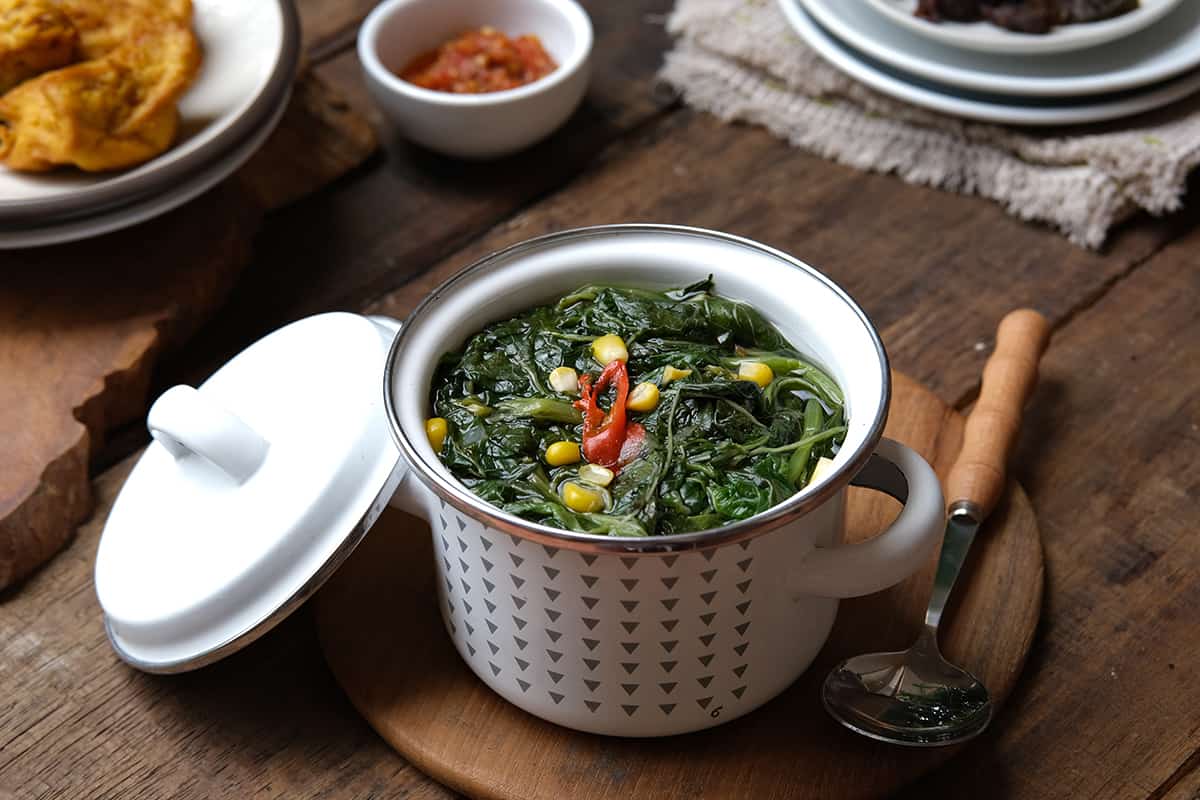
Specialty saucepans are a great addition to any kitchen and can make cooking-specific recipes and techniques easier and more enjoyable. When choosing a specialty saucepan, consider the type of food you’ll be cooking, the cooking technique, and the size of the saucepan that will best fit your needs.
Here are some of the most popular specialty saucepans, their sizes, and their typical applications:
1. Mini saucepans
These small saucepans, which typically hold only a few ounces of liquid, are ideal for melting butter or heating up small portions of sauces or dips. They’re also a cute way to serve individual soup or chili portions.
2. Saucier
A saucier is a specialized saucepan with rounded sides that make stirring and whisking sauces and custards easier. The rounded sides prevent food from becoming trapped in corners and make pouring easier. Sauciers are typically available in 1 to 3-quart sizes.
3. Double boiler
A double boiler is made up of two saucepans that fit together, with the upper one sitting inside the lower one. The double boiler is used for cooking delicate sauces, custards, and chocolate, in which the heat must be evenly distributed and controlled to avoid scorching. The food is held in the smaller top pan, while the water in the lower pan is heated to gently cook the food.
4. Saucepan sets
Saucepan sets come in a variety of sizes and usually include small, medium, and large saucepans with lids. These sets are ideal for those who need a variety of saucepan sizes for various recipes and cooking needs.
5. Stockpots
Stockpots, while not strictly saucepans, are similar in shape and design. They’re typically larger than a saucepan, with a wide base and high sides, and are used for making large batches of stocks, soups, and stews.
Choosing the Right Saucepan for Your Needs
Choosing the right saucepan size can be difficult, but it is critical for achieving the best results in the kitchen. Here are some things to think about when choosing the best saucepan for your needs:
1. Amount of food being cooked
The size of the saucepan you select should be determined by the amount of food you intend to cook. A small saucepan is ideal for preparing a single serving of soup, whereas a larger saucepan is ideal for preparing soup for a group.
2. Your cooktop layout
The saucepan’s size should also be compatible with the cooktop’s size. A large saucepan may not fit on a small stove burner, and a small saucepan on a large stove burner may not heat evenly.
3. Your go-to cooking techniques
Different cooking techniques necessitate the use of different-sized saucepans. For example, boiling water for pasta necessitates a larger saucepan than making a delicate sauce that must be stirred frequently.
4. Handle design

When selecting a saucepan, comfort and sturdiness of the handle are crucial factors to consider, especially if the pot is heavy. To avoid burns, look for handles with a silicone grip for added safety.
5. Material
The material of the saucepan can also have an impact on its performance, durability, and usability. The most common materials used for saucepans are stainless steel and aluminum, while copper has excellent heat conductivity.
5. Lid
Don’t overlook the lid when choosing a saucepan! It’s crucial for retaining heat and moisture while cooking. Make sure to select a saucepan with a tight-fitting, well-sealed lid for optimal results.


